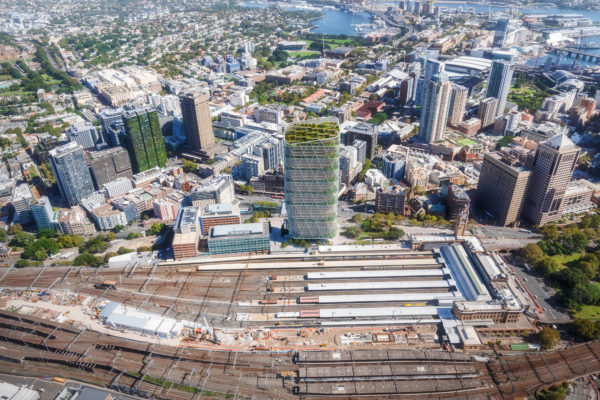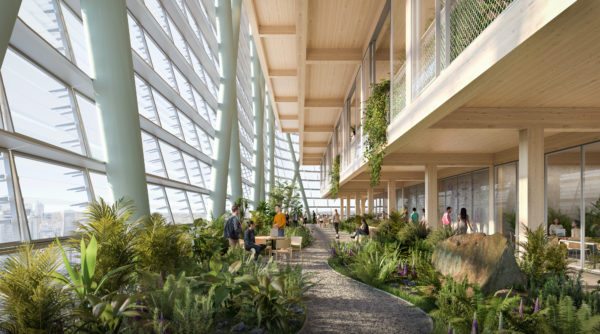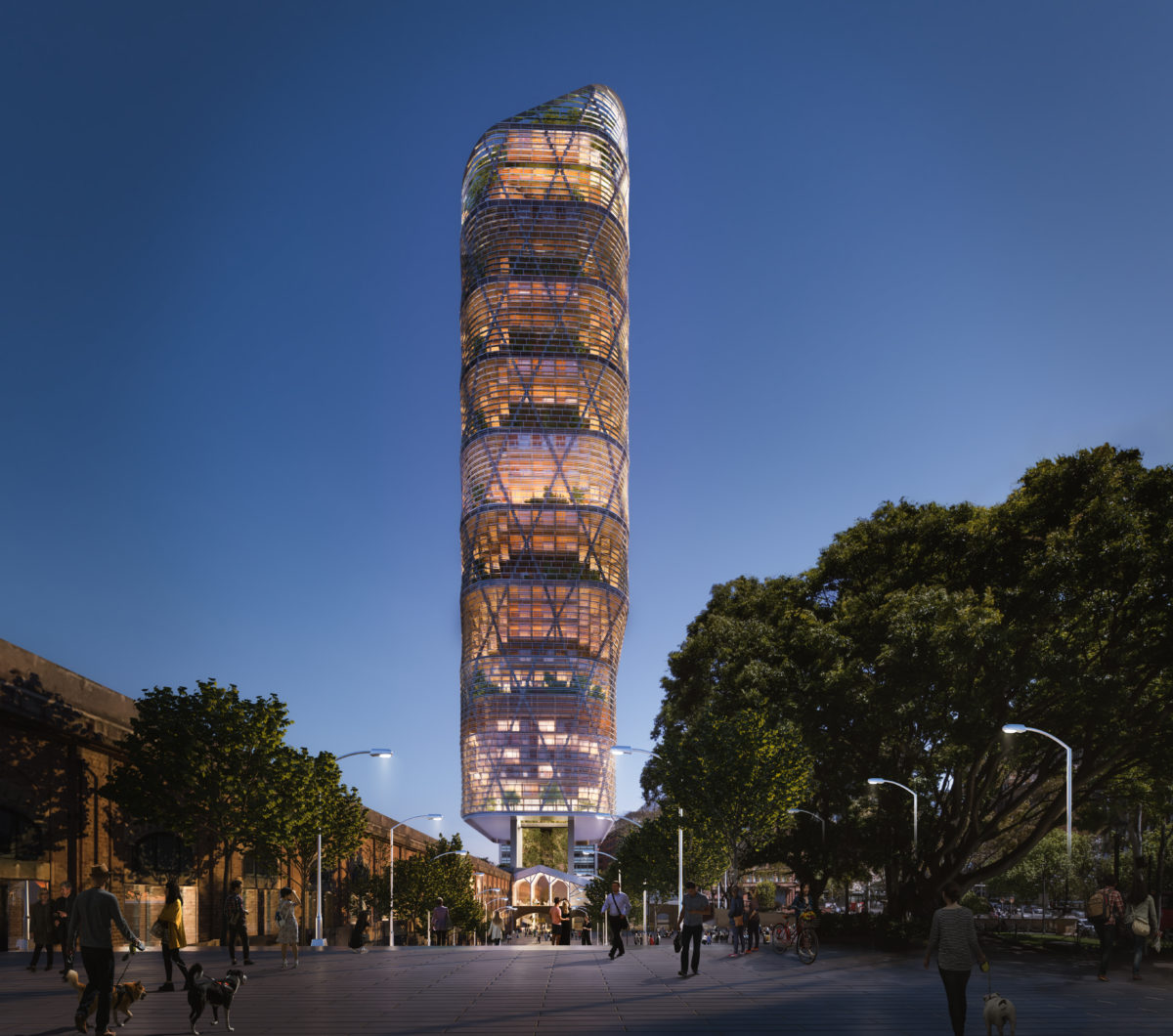It may not be as awe-inspiring as the 10 GW SunCable solar project that Atlassian co-founder Mike Cannon-Brookes has invested in; and it may not have the personal impact of Cannon-Brookes’ $12 million funding of standalone solar systems for bushfire stricken communities in the wake of this summer’s bushfire devastation, but Atlassian’s new headquarters will stand for a great deal — innovation, human-centred design, the transformative power of technology, and a commitment to low carbon emissions.
To be built above a heritage parcel shed near Sydney’s Central Station, the 40-storey, essentially timber tower will be supported by a steel exoskeleton — a construction that has 50% less embodied carbon than conventional concrete buildings.
Solar panels in the tower’s vertical facades will generate renewable energy onsite; while design features, such as natural ventilation flows and large planted terraces will help to halve the building’s energy consumption compared with other new, conventionally operated buildings.
“The space that we’re building will be highly sustainable and highly flexible,” said Atlassian Co-Founder and Co-CEO Scott Farquhar.

Image: Atlassian
Wood if you could?
The 180-metre, hybrid timber tower was envisaged by New York-based architects, SHoP, and Australian-based architects, BVN — which last year won the Australian Timber Design Award Multi-Residential for the Fenner Hall Student Accommodation which it designed as part of its work on the Australian University’s Kambri Precinct
Ninotschka Titchkosky, Co-CEO of BVN, said, “Atlassian has their eyes set firmly on the future. This project … will make what was once best practice seem inadequate and hopefully lift the ambition of the built environment across Australia.”
Tearing up the carbon-copy blueprint
The Australian built environment needs inspiration to decarbonise, with buildings responsible for around one-fifth of the country’s emissions.
ClimateWorks Australia recently reported that more than half of the buildings standing in 2050 will be constructed from this point onwards.
Its 2018 Decarbonisation Futures report on Buildings said that “While the sector has the potential to reduce emissions by 69 per cent below 2005 levels by 2030, it is on track for just an 11 per cent reduction.”
ClimateWorks concluded that application of emerging innovations can “help accelerate the transition”, but “Any delay risks ‘locking in’ emissions for the duration” of today’s building lifetimes.
Where technology and renewables meet
Atlassian’s headquarters will be the world’s tallest application of Mass Timber Construction — a technology which uses timber panels set together at cross-grain purposes to maximise strength — demonstrating what the material can achieve.
It will be used by 4,000 Atlassian staff in a technology precinct set to attract around 25,000 workers. Farquhar says that even with a much more distributed workforce post COVID, “we’ll need a place to come together,” and signalled the company’s intent to “design this space especially for these new ways of working”.

Image: Atlassian
From the outset, the building will be 100% powered by renewable energy, partially generated on site, providing a showcase for the capabilities of solar PV to energise corporate environments. It’s likely that remaining needs will be supplied by renewable power purchase agreement, although this has not yet been confirmed.
The combination of low-carbon construction, energy efficient design features and renewably sourced power supply will make visible Atlassian’s corporate principles, and contribute to its stated goal of achieving net zero emissions by 2050.
This content is protected by copyright and may not be reused. If you want to cooperate with us and would like to reuse some of our content, please contact: editors@pv-magazine.com.









Good quality content thanks winamax and Mr.Naza